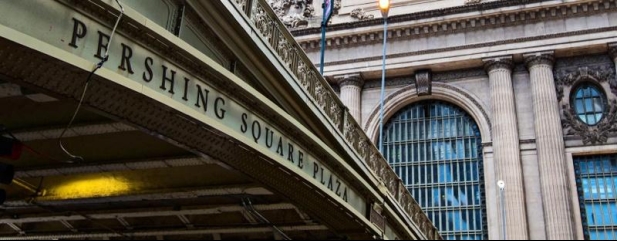Archived article
Please note that tax, investment, pension and ISA rules can change and the information and any views contained in this article may now be inaccurate.
How Pershing Square’s $25 billion IPO vanished into thin air

Billionaire hedge fund manager Bill Ackman is not the shy, retiring type who shuns publicity, so when he announced plans to launch an IPO (initial public offering) of a new closed-end fund on the New York Stock Exchange touting a $25 billion valuation it seemed natural to believe he could execute his bold plan without any hiccups.
After all, the proposed vehicle would mirror an existing closed-end fund, Pershing Square Holdings (PSH), which trades on the London and Amsterdam stocks exchanges, and Ackman could use his million-plus followers on social media to drum up support.
US closed-end funds are similar to UK investment trusts in that they have a fixed number of shares, so they are not subject to inflows and redemptions, giving the managers what is referred to as ‘permanent capital’.
Uncharacteristically, Ackman seems to have miscalculated the potential demand for the vehicle as well as the regulatory hurdles. On 31 July, Pershing Square abruptly withdrew the IPO just days before its debut.
How did the IPO unravel so quickly? Bloomberg reported that Ackman sent a letter to strategic partners of Pershing Square in which he said he had ‘reshaped’ his thinking having considered investor feedback after several weeks of marketing.
Ackman said the perceived size of the deal initially ‘anchored’ investors in thinking the deal was too large, although he believed this would ultimately be helpful.
The manager wrote he expected to file a prospectus the next day with a $2.5 billion to $4 billion deal size, a significant reduction on the original plan.
The thorniest problem for Ackman was the closed-end structure of the IPO. Investors could not get past the idea that such funds often trade at a discount to the underlying value of the assets in the portfolio.
In other words, why buy at the IPO price when there is a fair chance of getting cheaper stock in the secondary market?
The US market is a different beast to the UK and European markets, but even so it didn’t help the argument that Pershing Square Holdings currently trades at a 30% discount to NAV.
To appease investors’ fears, Ackman said he had committed to limiting supply versus potential demand so the stock would trade ‘well’ in the aftermarket. ‘In all previous closed-end fund IPOs the issuers have met 100% of the demand stock,’ wrote Ackman.
The manager also touted the global appeal of the Pershing Square brand and suggested people who weren’t eligible to buy stock in the IPO could provide good demand in the aftermarket alongside US retail investors.
Important information:
These articles are provided by Shares magazine which is published by AJ Bell Media, a part of AJ Bell. Shares is not written by AJ Bell.
Shares is provided for your general information and use and is not a personal recommendation to invest. It is not intended to be relied upon by you in making or not making any investment decisions. The investments referred to in these articles will not be suitable for all investors. If in doubt please seek appropriate independent financial advice.
Investors acting on the information in these articles do so at their own risk and AJ Bell Media and its staff do not accept liability for losses suffered by investors as a result of their investment decisions.
 magazine
magazine








